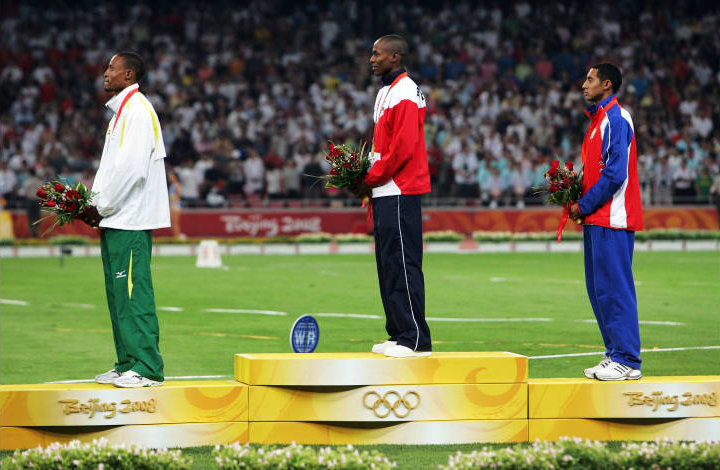The Recent Evolution of Olympic Podium Designs
The Tokyo 2020 design is, of course, 3D-printed recycled plastic
Due to COVID, Olympic medalists in Tokyo will have to put their medals on themselves. That's a first. Another is that the podium they'll be standing on is 3D printed, and made from recycled plastic gathered by the Japanese public, including plastic waste fished out of the ocean.

The podium, designed by architect, artist and designer Asao Tokolo, does indeed appear different.


But looking at it, I realize I can't recall what a single other Olympic podium looked like. So here's what I found in the Olympic archives for the Summer games, and you can see the progression in design styles.
Seoul 1988 Games

Okay, podium design was clearly not a high priority in '88. But at least they color-coded the tops and numbered them.
Barcelona 1992 Games

Numbered, but apparently the only paint they had was blue and white. Basic AF.
Atlanta 1996 Games


Atlanta ditches both the numbers and the color-coding, but goes logo-heavy. Welcome to America.
Sydney 2000 Games


Sydney's is probably the best design for those with small TV screens; you can still clearly see which podium is which. But I also realize, looking at previously color-coded podium designs, that there's no consensus on what color "bronze" is.
Athens 2004 Games


I think I've seen better props at grade school plays! This looks like someone bought a new color printer and was excited to experiment with it. I expected more from the town that hosted the first Olympics.
Beijing 2008 Games


Who'd have thought it would be Beijing that introduced innovation? Here they've done something different than all of the others thus far: They introduced a small shadowing detail in the individual podium layers that, when multiplied over a larger assembly, creates a visually interesting pattern. It's almost a metaphor for the power of the masses.
London 2012 Games



London goes full-blown designey. You can hear a British art director shouting at the fabricators: "More facets, gents!" or "Warp speed ahead!"
Rio 2016 Games


Rio goes craftsy and, well, they can get away with it; it's Rio. No one would expect anything less than fun and festive.
Tokyo 2020 Games


Asao explains his design:
"The key concept here was 'connection.' For instance, a polka-dot pattern is made up of 'individual' circles that are laid out to form 'groups' of circles. The way they are aligned is determined by 'rules.' Rules, as in sports, are certain restrictions that serve as an essential platform. The proactive rules in my case were based on simple arithmetic-level geometry, or maths-level geometry when things became a bit more complex. The rules were a means of expression. This seems analogous to society. Rules exist to forge beautiful connections and create beautiful things."
Paris, the ball's in your court for 2024.
-
o3Favorite This
-
QComment
K
{Welcome
Create a Core77 Account
Already have an account? Sign In
By creating a Core77 account you confirm that you accept the Terms of Use
K
Reset Password
Please enter your email and we will send an email to reset your password.

